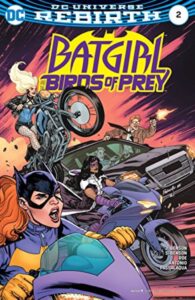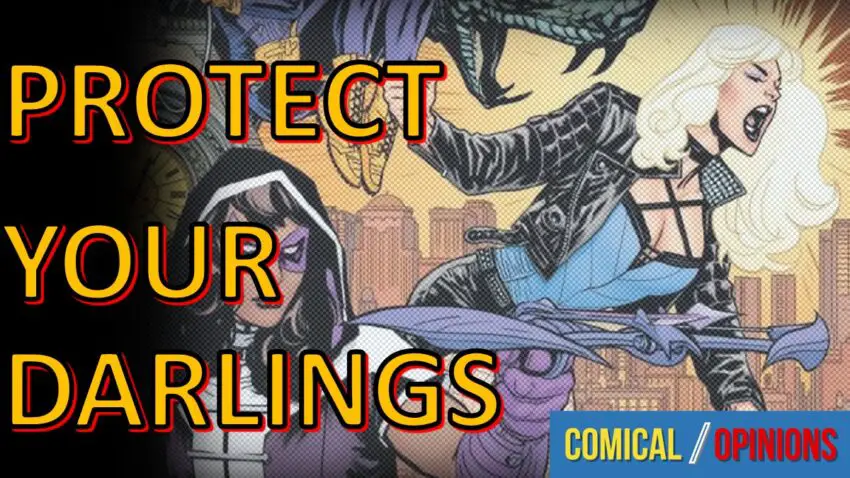The modern comics ecosystem is increasingly grappling with a creator’s responsibility toward a character, the downstream effect a creator can have on Publisher-owned IPs, and how easily a character can deviate from their origins when a writer doesn’t take the concept of “Protect Your Darlings” seriously. Consider this Op-Ed a cautionary tale.

In the interests of transparency, the reference article is a Tumblr blog post published in 2016, so it’s not recent news, but it may be as new to some of our readers as it was to me. The insights are valuable as, if nothing else, a warning for IP owners.
Noted comic creator Gail Simone was asked a simple question:

You can read the lengthy answer for yourself, and the rationale behind that answer, via the link above. What struck me as odd was this excerpt from Simone’s reply:
What’s The Big Deal?
Canonically changing Dinah from straight to ‘70% heterosexual’ is not a problem at all, as long as the reveal makes sense for the character and services the story being told in a material way. In this case, however, none of those qualifiers are in play.
I’ll be the first to admit that writing fresh stories for characters who’ve endured for decades can sometimes be a tall order. The challenge lies in three factors that govern how those characters are understood by the general reading audience. Of those three factors, two can be bent, but the writer must avoid breaking the third at all costs.
The Three Cs
We’ve reached a point in comics (at least for the Big 2) where “canon” is an unwieldy beast every writer will need to contend with to some degree. Some writers take on the challenge of acknowledging, incorporating, or at least not conflicting with the events of a character’s past. Others do not. Either way, canon exists, and wishing it away won’t work.
Next to “canon” is “continuity.” Continuity may be the harder beast to get a handle on in an ecosystem where every major publisher employs some version of a multiverse. When Character A dies, it’s no problem at all. Barely an inconvenience. You can simply pluck an alternate version of Character A from the multiverse to take their place, and life goes on.

This leads us to the third C-word, but that word matters more than “canon” and “continuity” combined. That word is “consistency.” It’s a simple word, but consistency governs the rules of a character and shapes their identity. Batman has a “no kill’ rule. Superman believes in Truth, Justice, and the American Way. Daredevil frequently suffers from Catholic guilt. And Spider-Man believes that with great power comes great responsibility.
Consistency is just a word to encapsulate the rules that define a character’s being. That’s why the major publishers have (or should have) a character bible on all publisher-owned IPs. The person or company who owns a character documents the rules that define a character to ensure that the character remains consistent, regardless of who writes the story.
You can retcon canon. You can sidestep continuity. In both cases, readers will accept changes within a margin of flexibility.
However, a writer who messes with consistency risks breaking a character beyond repair unless the change is done with extreme care and caution. A consistency change should never be undertaken lightly or without a killer reason.
If a story comes along where Spider-Man’s Uncle Ben is revealed to still be alive, readers can go with it if the reveal fits Spider-Man’s history.
If Spider-Man dies but is replaced with a perfect doppelganger who talks, acts, and feels the same as the original Spider-Man, readers will go with it in time.
But if you suddenly give Spider-Man a debilitating lisp and an extreme dislike for New York City, that change would never fly, no matter the justification. You can break the history of a character or the world around a character, but consistency in a character’s identity must remain intact except under extreme conditions.
Back to Black Canary
Before we dig much further, I want to be clear that this isn’t a “pick on Gail Simone” Op-Ed. That said, Simone published a public reply to a public question, so I believe the posting is fair game for analysis and critique.
The troubling aspect of Simone’s response is her desire to make a fundamental change to Dinah’s identity based on nothing more than a feeling and an oddly superficial understanding of what it means to be gay/bi-sexual. Changing a character’s sexual identity because she looks gay when she wears leather and rides a motorcycle is the kind of stereotype most off-color jokes are created from.

Consider the Cancel Culture world we live in and how that world is constantly swayed by Identity Politics in all directions. Imagine the back-and-forth arguments that would have resulted from Simone’s change if it had gone through. Imagine the endless drama DC editors would have to sort through every time Dinah would show up in a comic with a potential love interest. In effect, Simone’s change, founded on little more than a feeling and a surprisingly superficial stereotype, would have led to years of noise, drama, and distractions that would mark Black Canary with a “Handle With Caution” label forevermore.
Could Gail Simone have written a story that would allow Dinah to come out of the closet in a way that makes sense for the consistency of the character and in meaningful service to a great story? Anything is possible, but reading Simone’s response, it’s clear she intended to disrupt Dinah’s identity simply because she could.
Why You Should Protect Your Darlings
Gail Simone’s honest reply to a simple question is a cautionary tale. If you care about the characters you own, you must protect your darlings. You never know for sure what a writer has in mind until you see the finished script, so make sure you have editors you can trust who comb through every balloon of dialog and every narration box.
If you care about the consistency of your characters, because consistency for the readers is what matters most, protect your darlings at all costs.
We hope you found this article interesting. Come back for more reviews, previews, and opinions on comics, and don’t forget to follow us on social media:
If you’re interested in this creator’s works, remember to let your Local Comic Shop know to find more of their work for you. They would appreciate the call, and so would we.
Click here to find your Local Comic Shop: www.ComicShopLocator.com
As an Amazon Associate, we earn revenue from qualifying purchases to help fund this site. Links to Blu-Rays, DVDs, Books, Movies, and more contained in this article are affiliate links. Please consider purchasing if you find something interesting, and thank you for your support.

